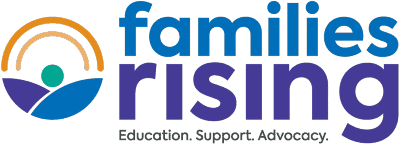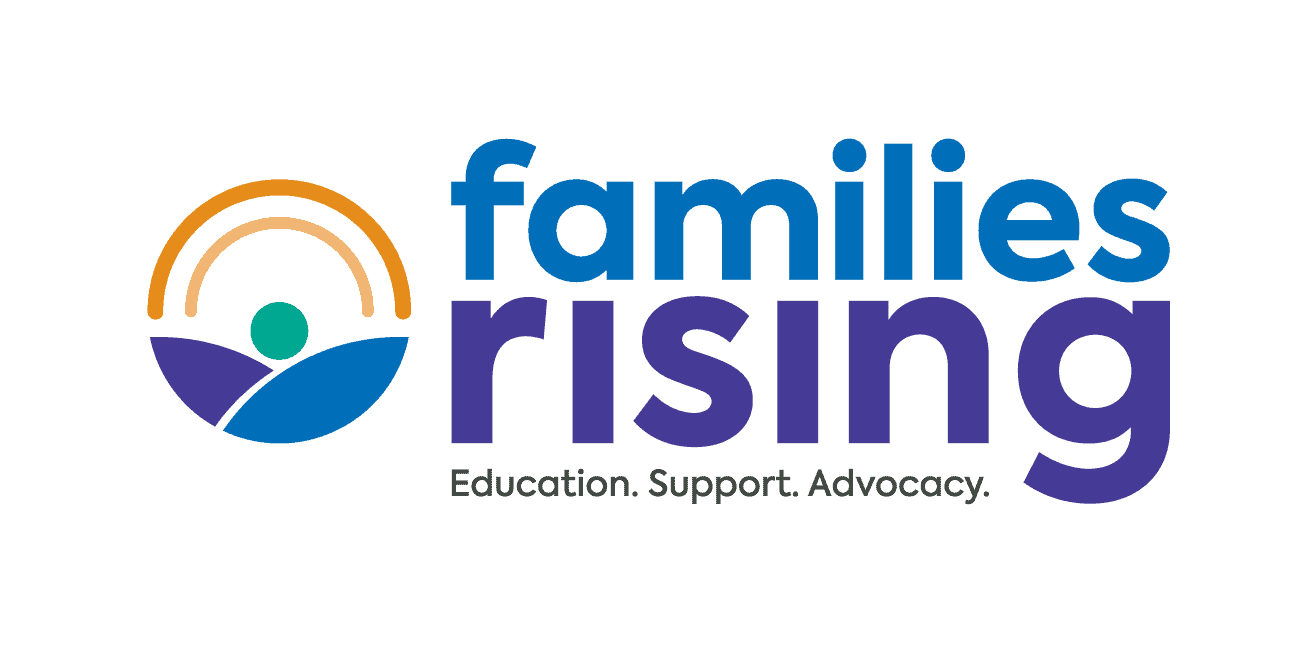
This document was created as part of Families Rising’s Advocates for Families First collaboration with Generations United and the National Foster Parent Association
Always Put Children First
- Frame your messages around children, even if you’re talking about a family’s support need.
- Make sure children, youth, or kids are in your headline or first sentence.
- Make sure you talk about how your proposal helps children.
For example, if you are advocating for support groups for adoptive families, you might say, “Children fare better when their parents can learn from others who have been on similar journeys. In support groups, parents and caregivers learn patience, find parenting skills that work, and identify resources in the community to help their child thrive.” If you’re advocating for financial benefits such as adoption assistance benefits, talk about how these resources enable children to heal and thrive: “With the benefit, Kayla is able to access tutoring and other school supports to help her son José do well in school despite his learning disabilities and the many moves he experienced in previous placements.”
Use Language that Puts People Front and Center
- Put the child first.
Use the words child in foster care rather than foster child. Talk about children at risk of abuse rather than at-risk children. Discuss children who have a disability respectfully. Avoid labeling them if possible. Always put the child first.
Use “My child has struggled with broken attachments…” instead of “My RAD kid….” - Use friendly, familiar language.
Talk about brothers and sisters or girls and boys rather than just siblings or children. Occasionally use the word kids and teens instead of children and youth. Talk about families, moms, and dads rather than always talking about parents. Use “foster mom” rather than foster care provider. Talk about “grandma and grandpa” instead of always using the term “relative caregivers.” Communicate that adoptive parents are real parents too. Never use terms like “natural” or “real parents” to refer to birth parents — foster and adoptive parents are real too. - Tell stories that paint a picture about real children or families to make their needs come alive. Whenever possible, use names (even if you have to change the name).
Compare these examples: “Tyrone was separated from his sister Tiffany when they were placed in a group home, but were able to be reunited when they went to live with their grandma. Too many children like Tyrone and Tiffany lose connections with their brothers and sisters when they aren’t placed with a family.” That’s much more effective than “In group care, siblings are separated more often than in kinship or foster care.”
Remember that All Types of Families Can Meet Children’s Needs, and We’re All in This Together
- Combine forces whenever possible. There is strength in numbers. If we talk about the things birth parents, relative caregivers, foster parents, and adoptive families have in common, we can increase our impact.
- Talk about birth parents respectfully — birth family members are always going to be important in children’s lives.
- Value all types of families; be careful not to pit one group against another. When talking about the need for permanency, remember to show respect for the foster parents providing temporary care. When advocating for foster parents, be careful not to talk about relatives who haven’t stepped forward or birth parents who failed their children. If your focus is on relative care, don’t talk about saving children from foster care or talk about avoiding placements with strangers.
For example, you might say: “Foster parents provide an amazing service for children who need temporary care, but children need the permanency of placement with relatives or adoption.” Or “When a child can’t live with her birth parents anymore, she needs another family who can provide her with love and care.”
Be Positive
- Emphasize that children and youth — even those facing many challenges — are currently thriving in kinship, foster, and adoptive placements.
- Avoid putting down other types of families. Whether children are with birth parents, other relatives, foster families, or adoptive parents, they can thrive. Their needs are often the same or similar and each type of parent may need support to best meet their children’s needs.
- Make it clear that supports and services help children and youth heal from past trauma and make a tremendous difference for families.
- Mention that many states and other jurisdictions have been able to recruit and support more families for children to grow up and grow old in, and thus have safely reduced the need for group care, even for children with complex needs.
Be Careful When You Advocate for Support — Emphasize the Challenges Facing Children and Their Families Without Blaming the Children
- Be careful how you talk about children and youth, emphasizing the fact that they and their families face challenges due to the trauma and loss they have experienced, not through any fault of their own.
- Use language such as: “Parents often face serious challenges when their children have been deeply affected by trauma.” “Trauma can have a lifelong effect on children, including on behaviors, physical and mental health, and ability to form healthy relationships.” “Many parents need support to address their children’s mental health challenges or difficult behaviors.” Never use phrases like “damaged children” or “difficult children.”
- Be hopeful. Give examples of how finding a loving, supportive families can and have helped children and youth recover from past hurts.
Make the Connection Between Children Who Need Care and the Children Your Audience knows and Loves
- Help people understand that we’re talking about children just like those they know and care about.
Use sentences like this: “For children who can’t live at home, we want just what you’d want if you couldn’t care for your child — a family who loves them and will care for them forever.” - Even when talking about children who have serious disabilities or other challenges, emphasize that they are children like our daughters, sons, nieces, nephews, and neighborhood kids.
For example, “Children in foster care are just like your children — they have strengths, skills, and fears. They often, though, need extra help to overcome the trauma they have experienced in their young lives.”
Or if you’re talking about a specific child, “Joey loves to laugh with his foster father and play with the family dog. He also needs ongoing therapy to help him address the loss of his birth family and abuse he suffered as a toddler.”
Paint a Picture of What a Family Is and Does
- Use pictures or use words that tell a story.
Use talking points such as: “Moms, dads, grandparents, and other caring family members walk their children down the aisle at weddings. They cheer at sports events, debate clubs, and school plays. They host holiday dinners for their adult children and their kids. Family members celebrate the joys of life and help even their adult children recover from losses and respond to challenges.” Or say: “Children who live in a family will benefit from extra hugs and their favorite dinner, a bedroom they can decorate, and a brother or sister they can whisper to at night.” - Talk about the added benefits of family. Having a family connects children to an extended network of relatives who provide support, care and love.
Keep It Simple
- Avoid jargon and acronyms. Use plain, positive language.
Say: “Children need families.” Instead of “”Children should be placed in the least restrictive setting.” Rather than talking about “congregate care” use terms like “unable to live with their parents,” “group care,” “children who aren’t in a family.” Or explain, in concrete terms, to what you are referring. About “least restrictive placements,” one could say: “There is a law that requires all children and youth live in environments that allow them to have the most opportunities possible.” - Accept that most people don’t understand the child welfare system and don’t really need to for you to succeed. Keep your focus on what’s best for children and what children and families need.
- Remember that you know too much. Don’t provide more details than are needed.
Be Respectful of Those Providing Group or Institutional Care
- Those placing children into group care and people working in group care are also committed to children. Underscore that group and institutional care settings provide needed, short-term treatment for some children and youth and highlight the value of therapeutically necessary services.
Weave Together Stories and Data
- The most powerful messages combine stories of real children and families with data that shows these kids and their parents are much like many others. People connect with the stories, but data may be more likely to convince them that there’s a large issue to address.
For example: “Billy lived in three different group homes before aging out of care without a family to care for him. Now he has no family members to invite to his wedding and no home to go to for Thanksgiving dinner. He is not alone — nationally more than 20,000 youth age of care each year with no family to care for them and to rely on.”


